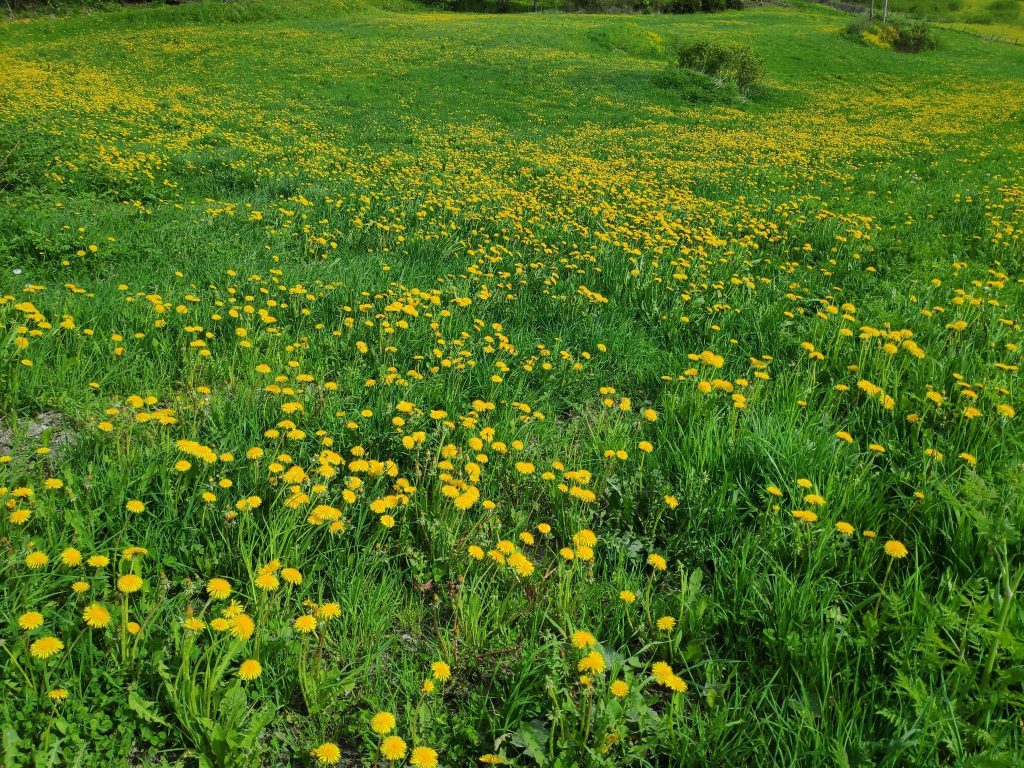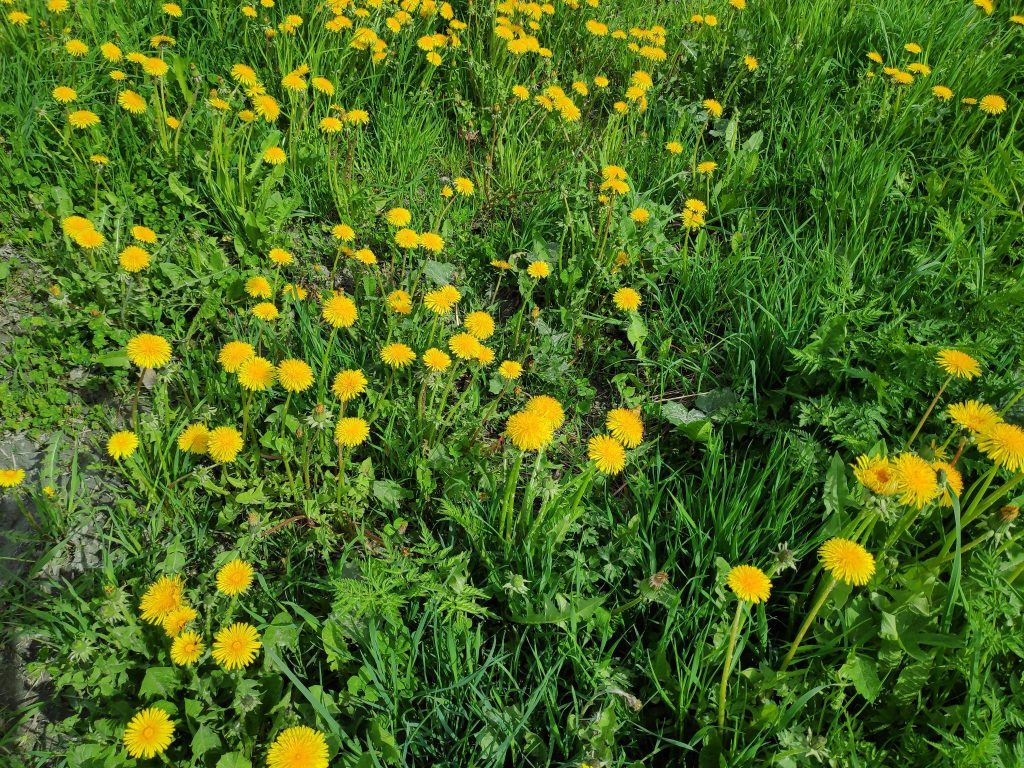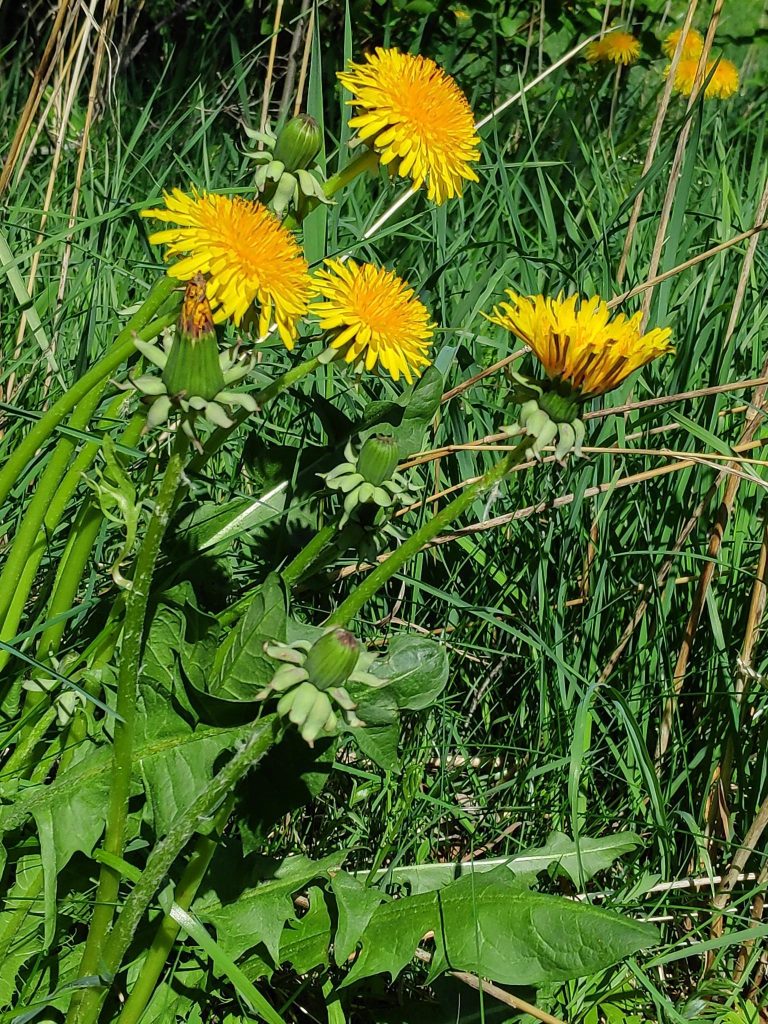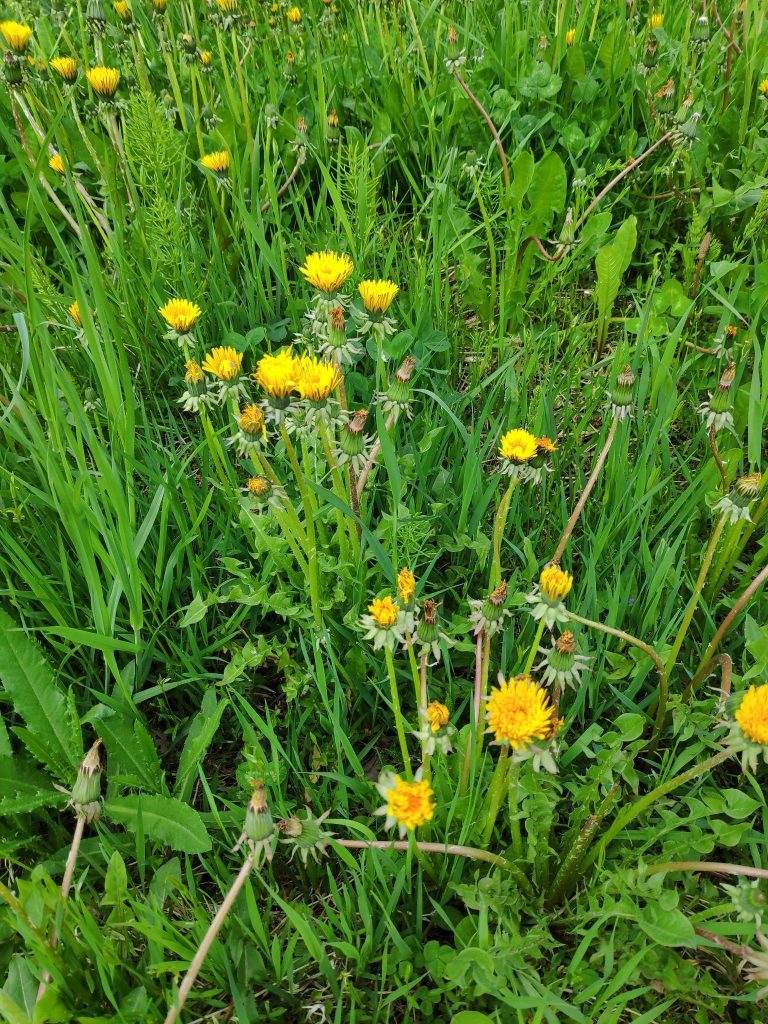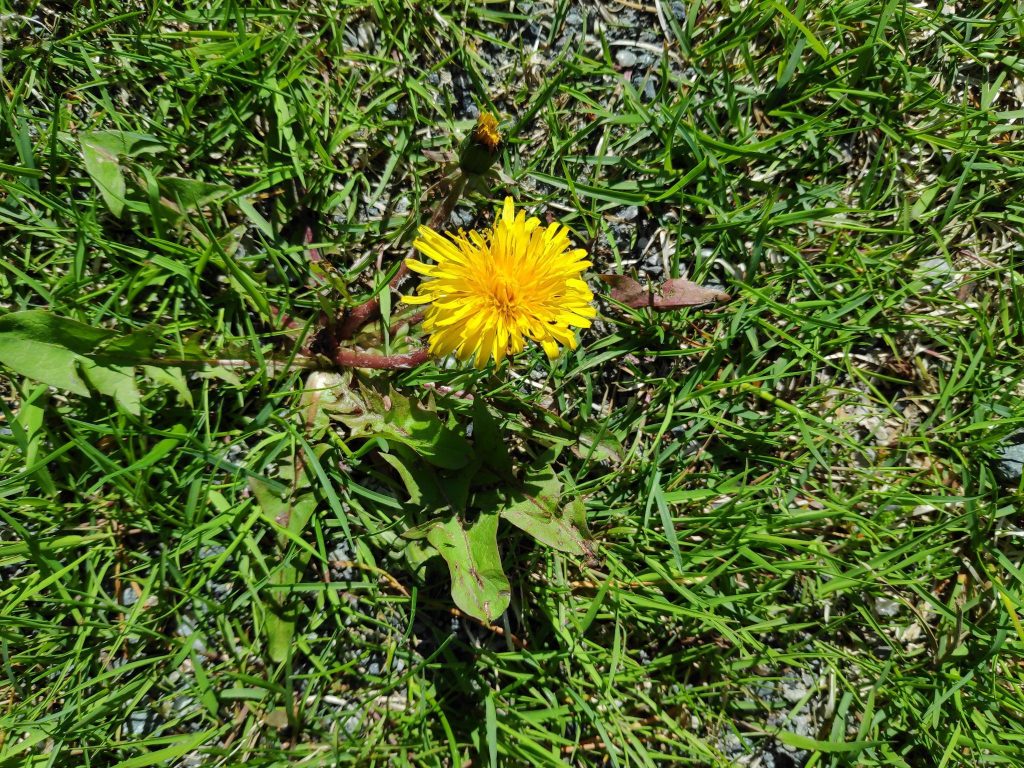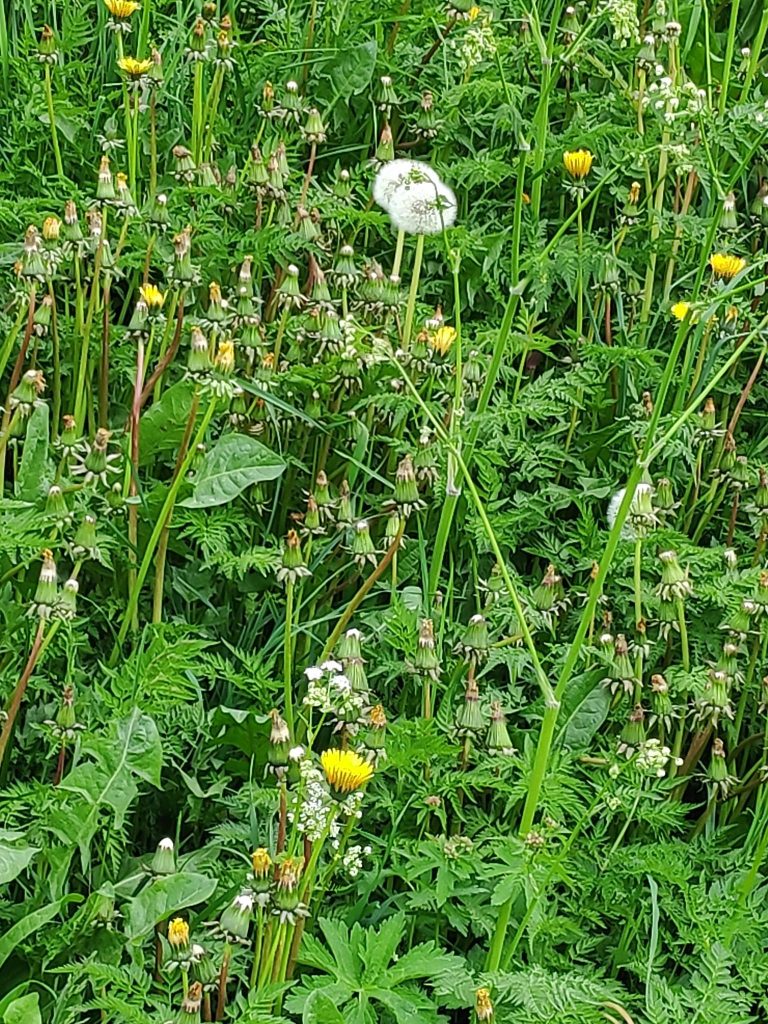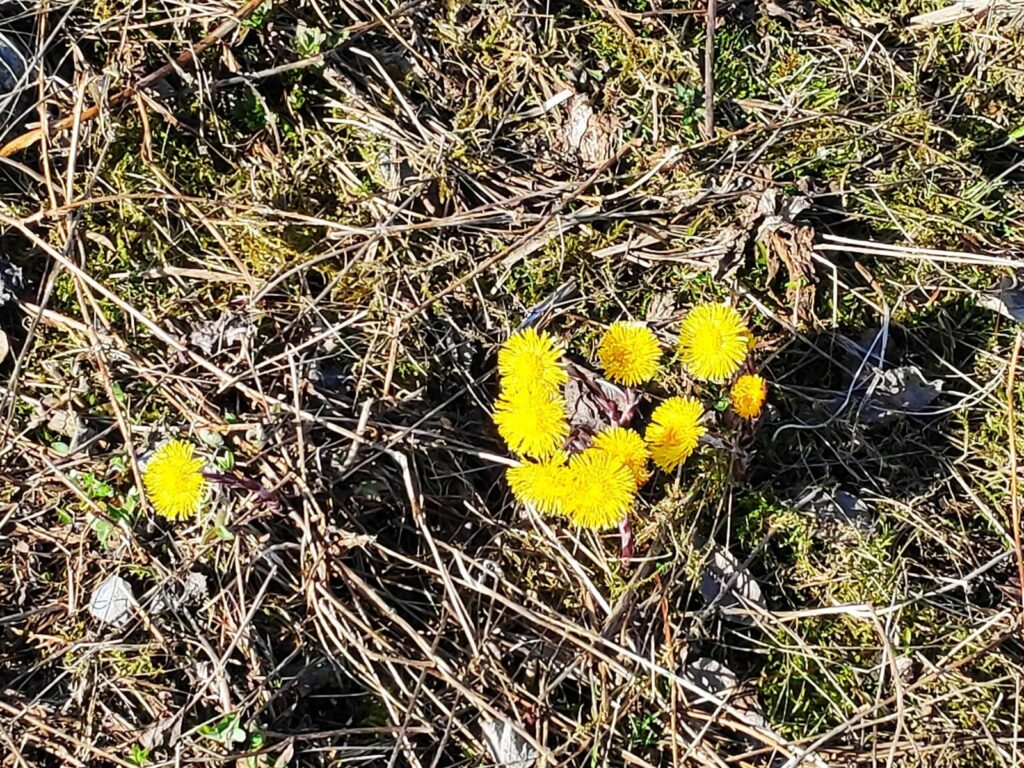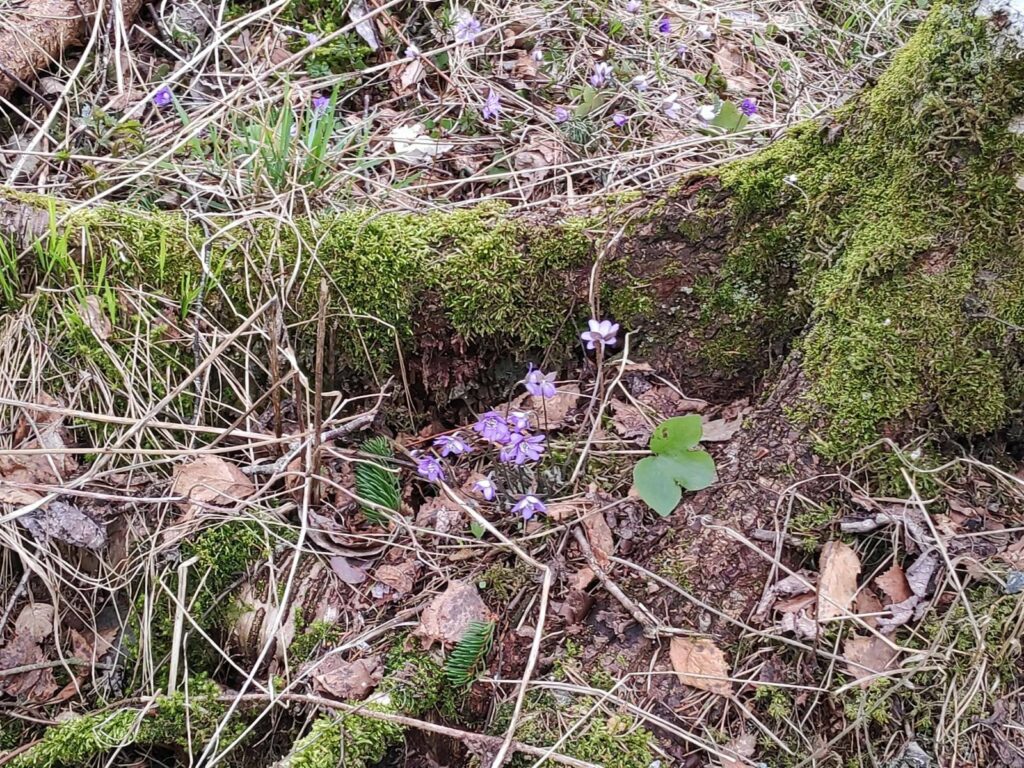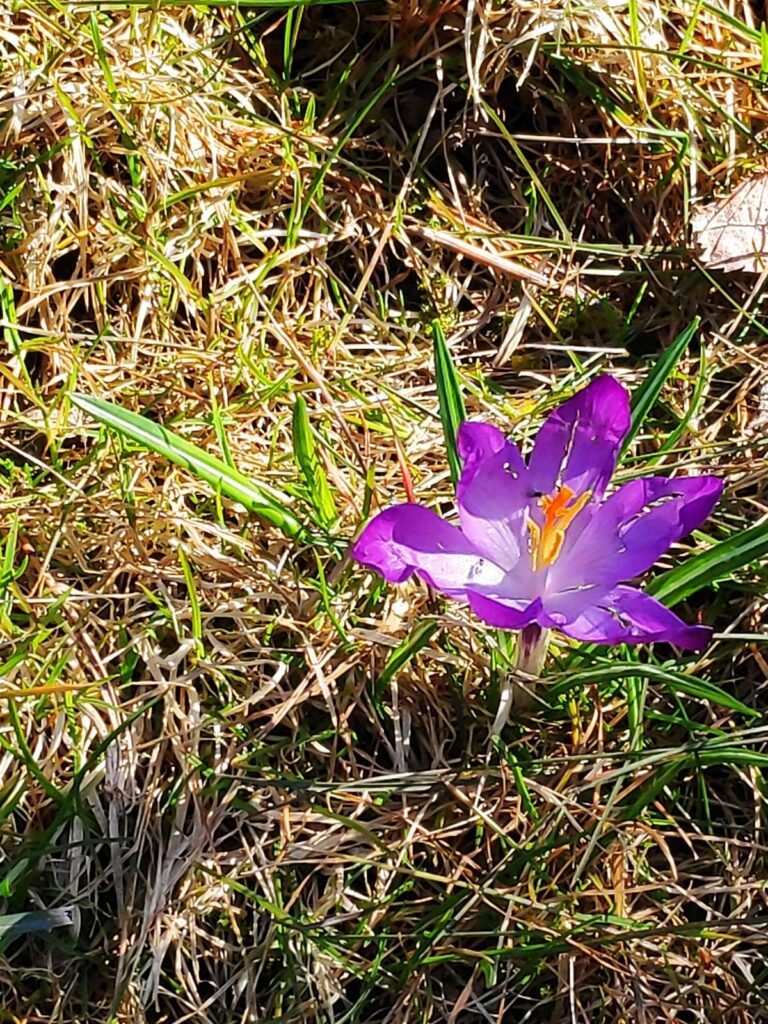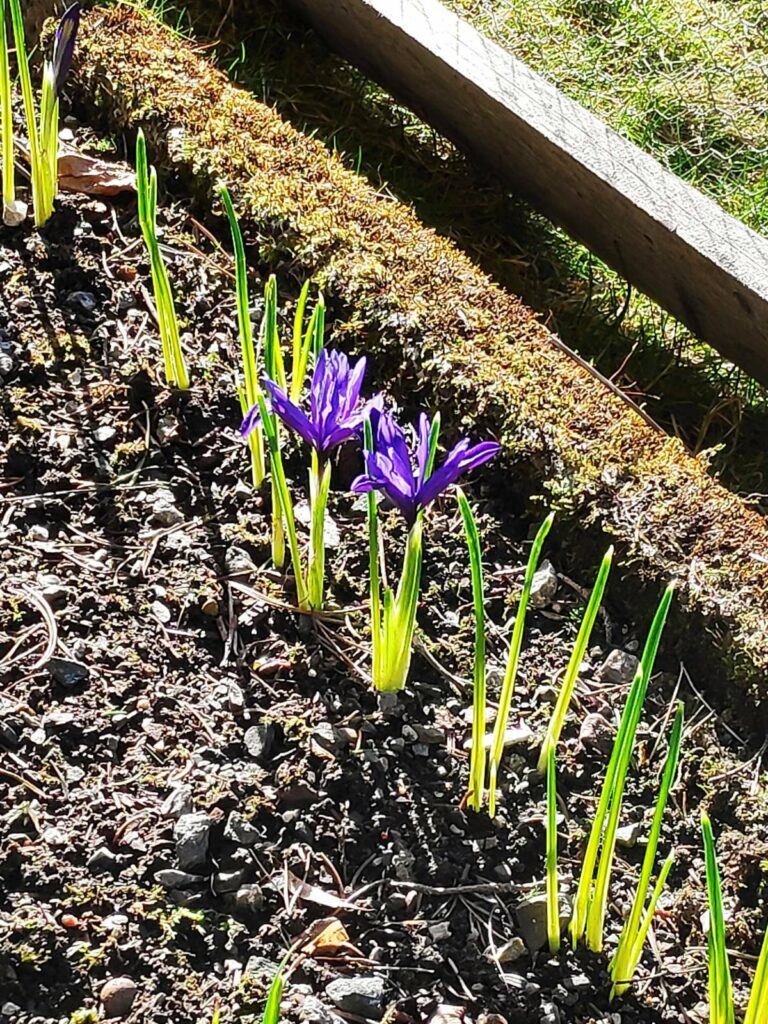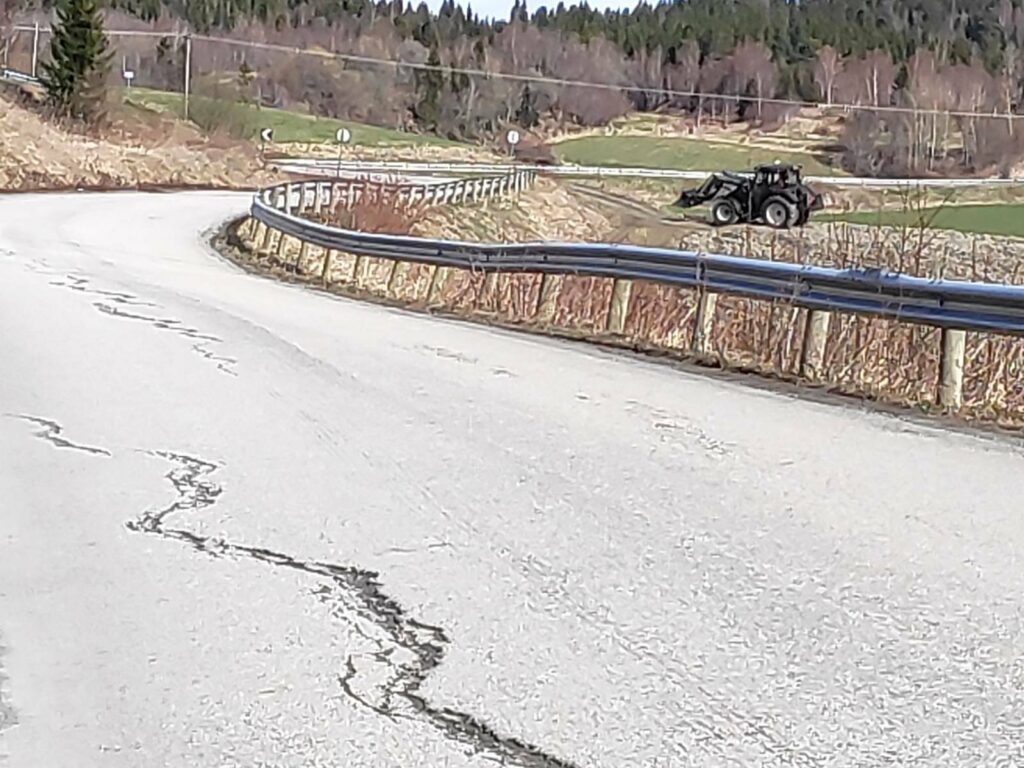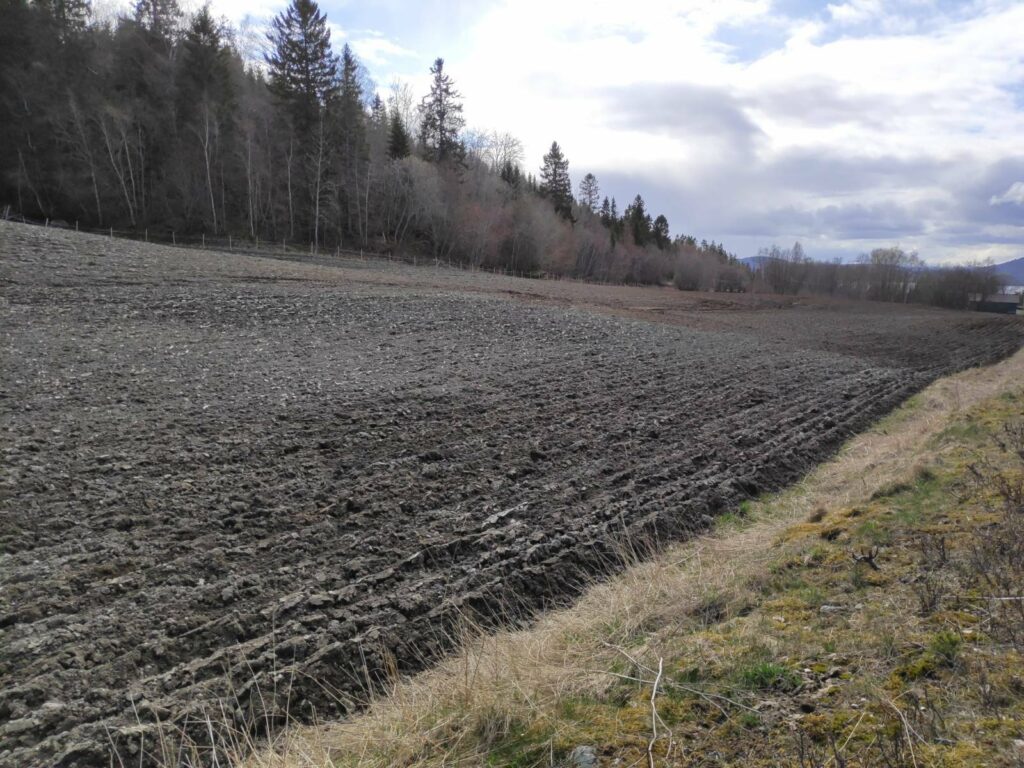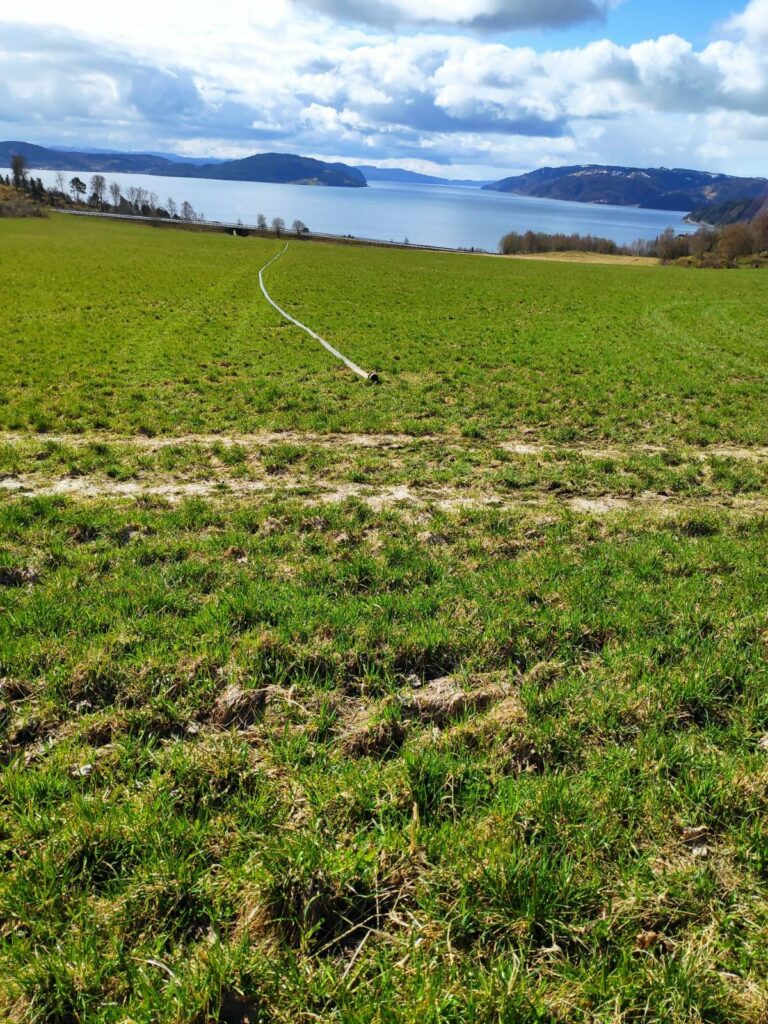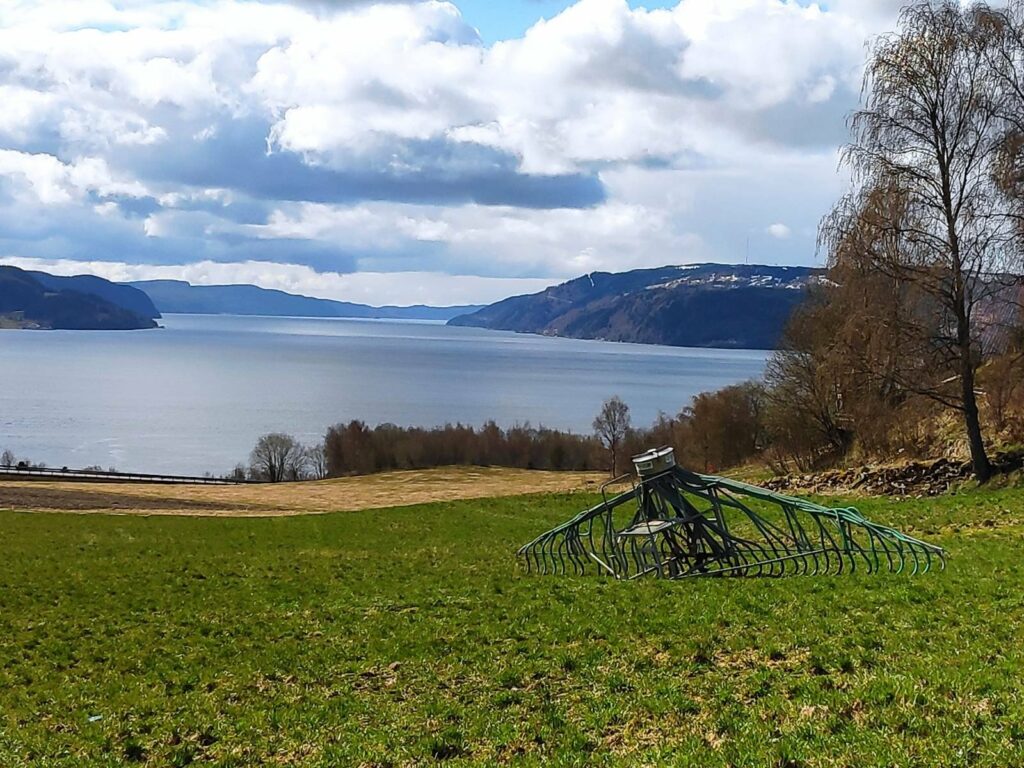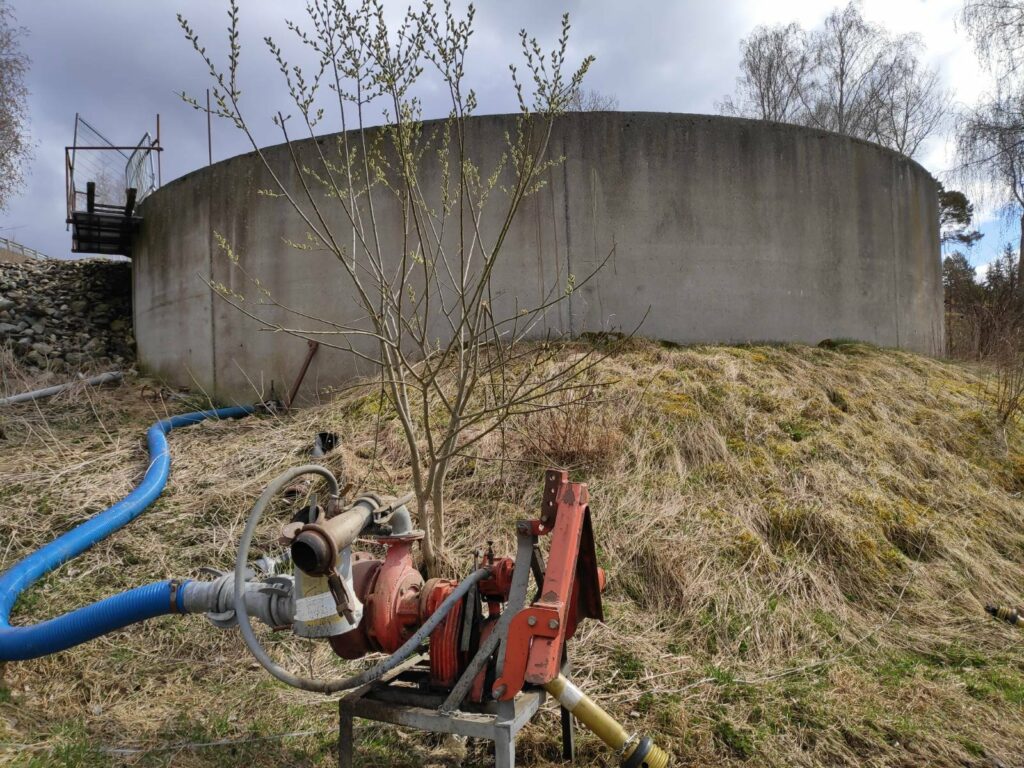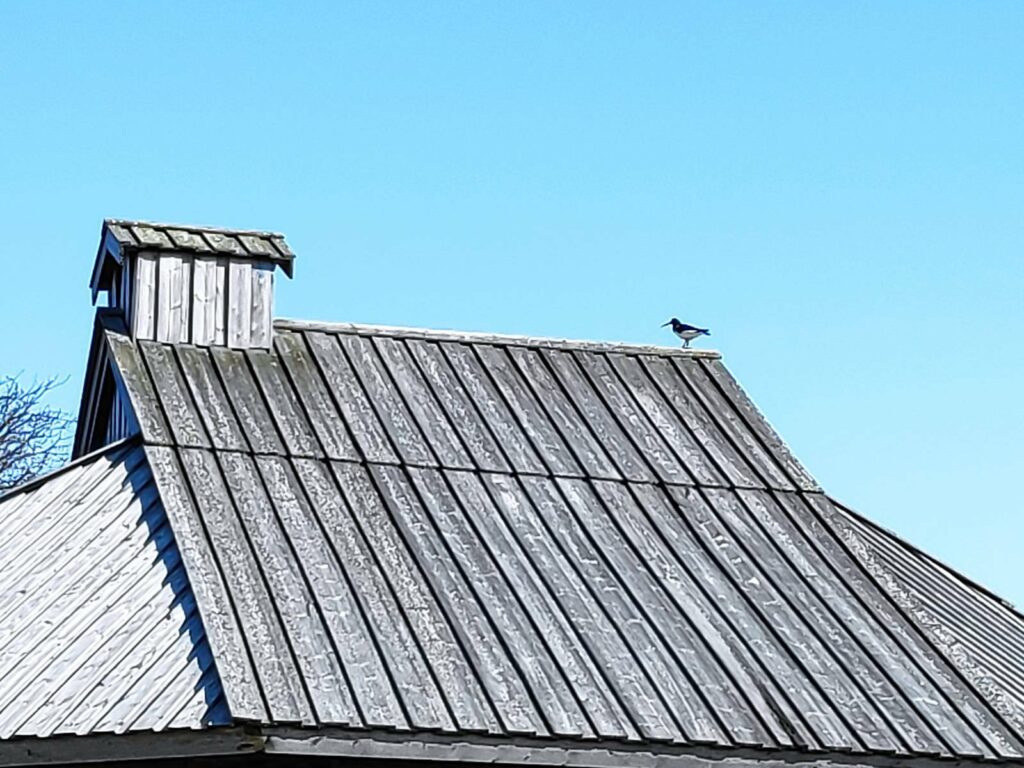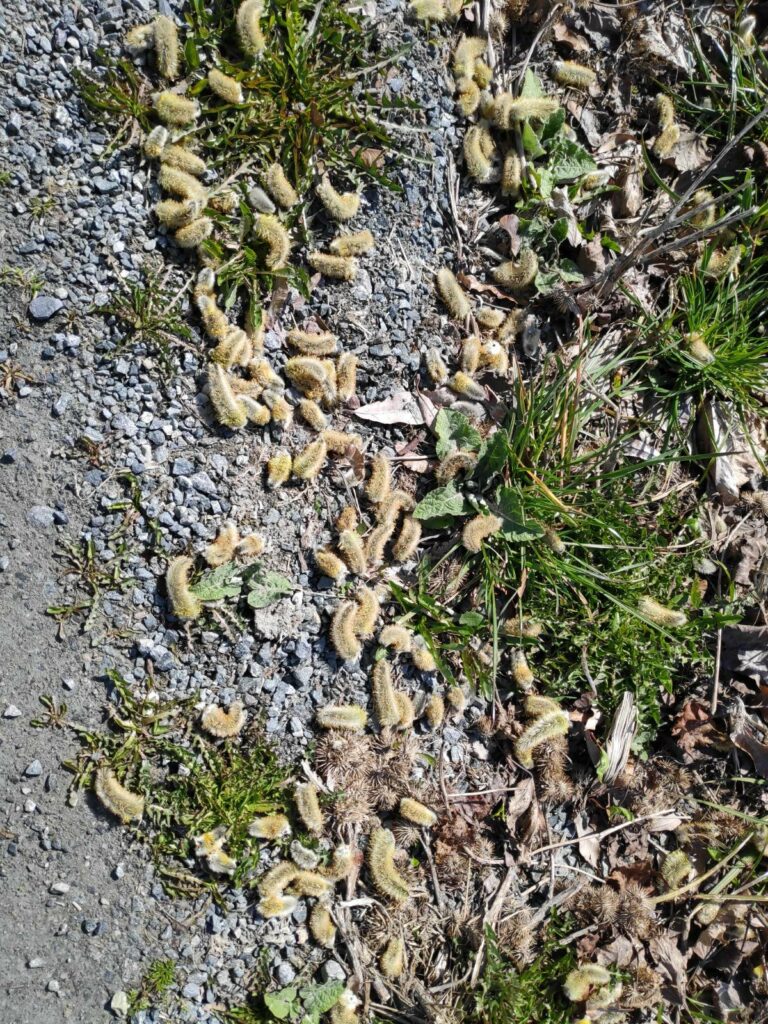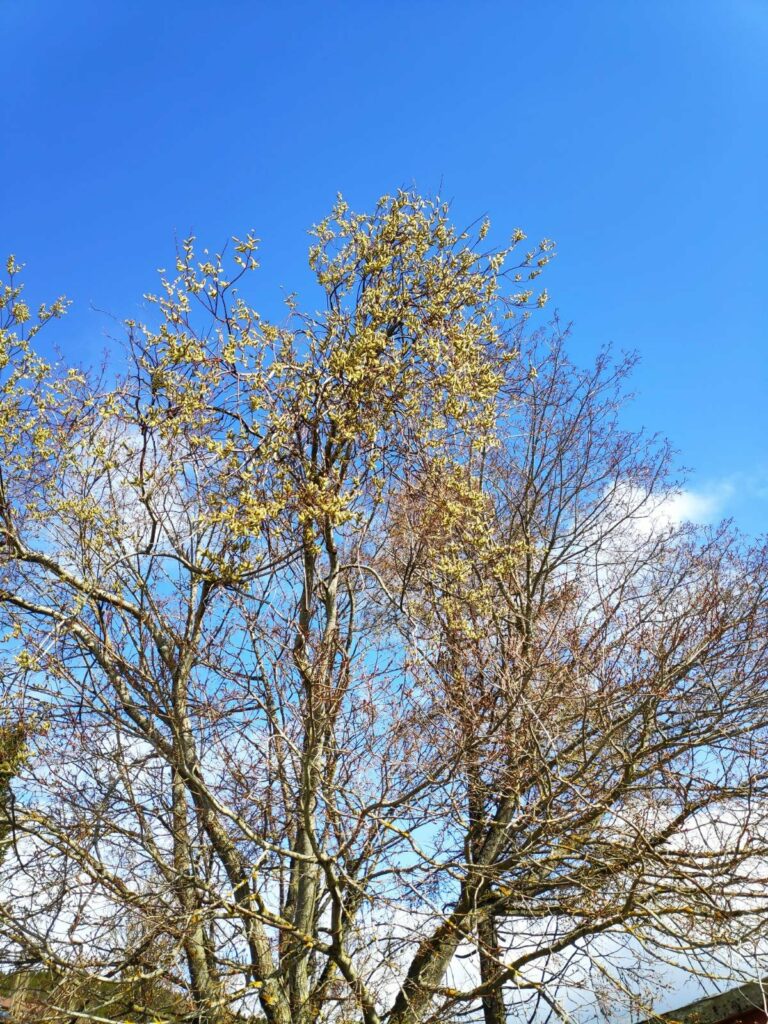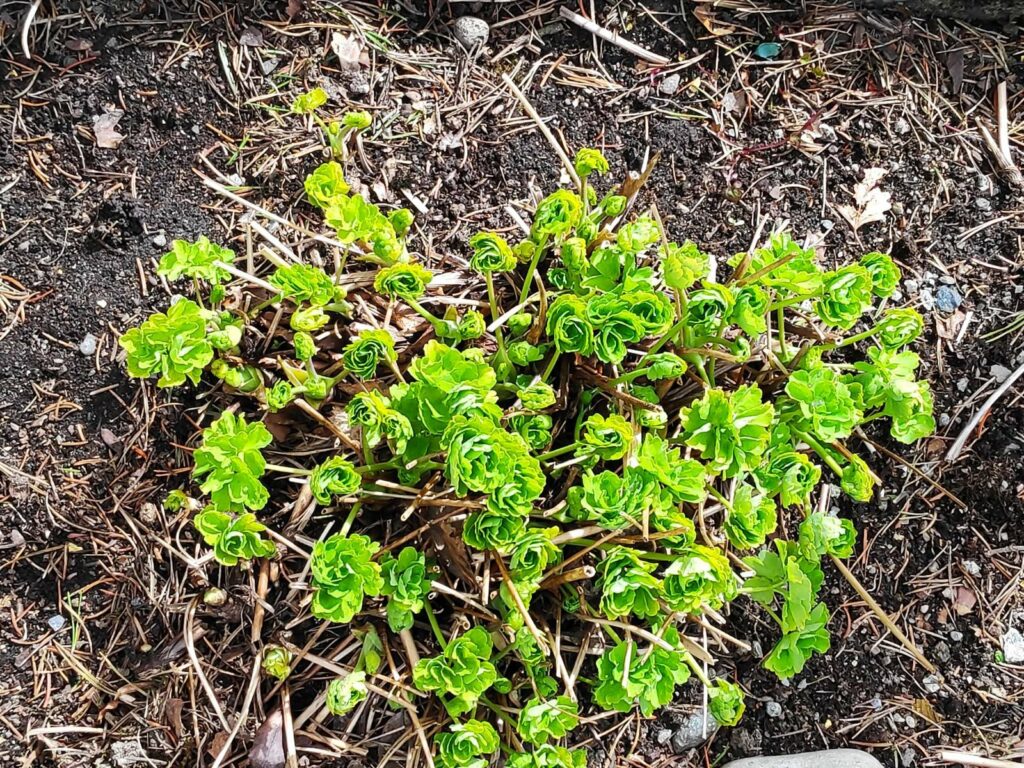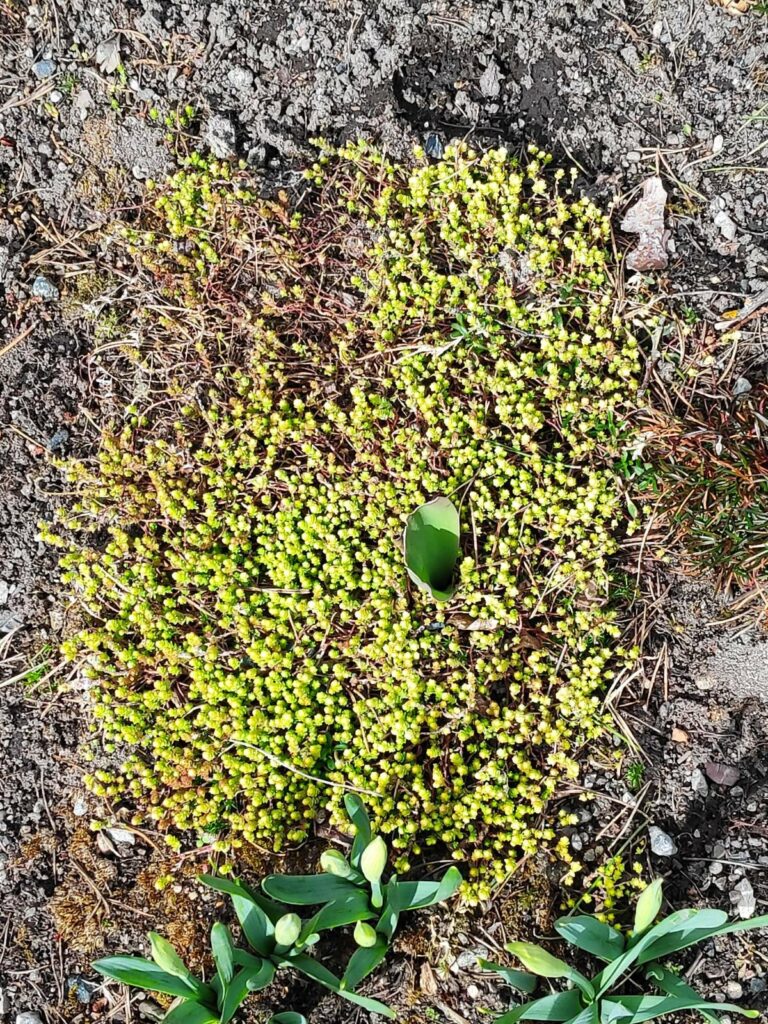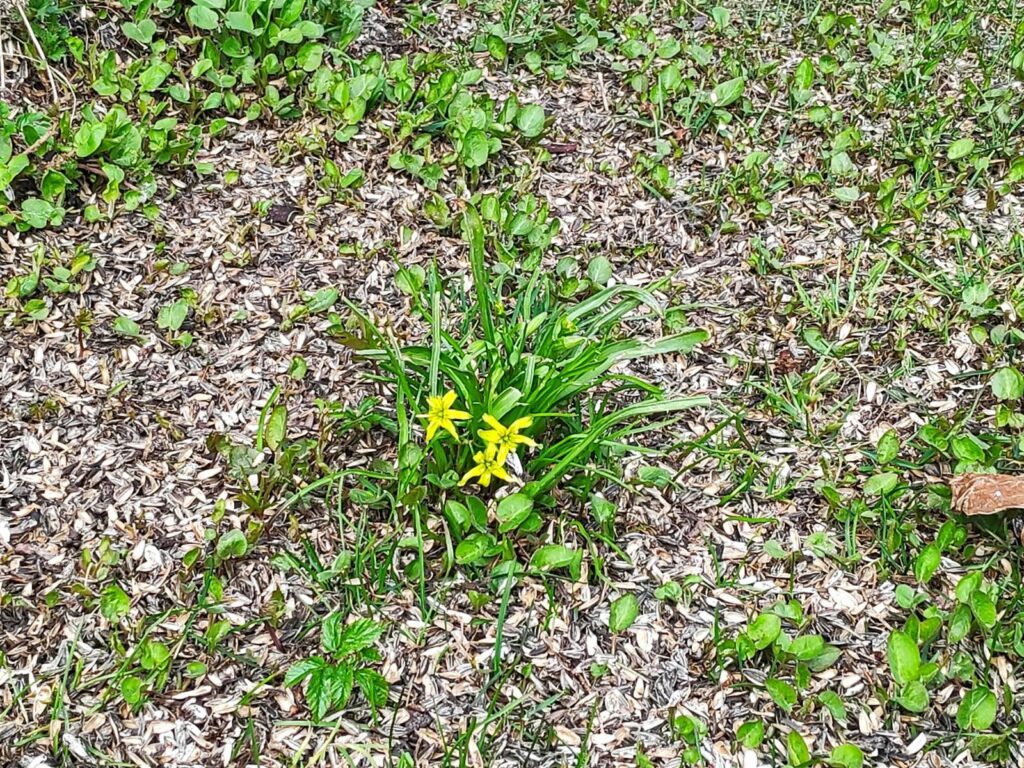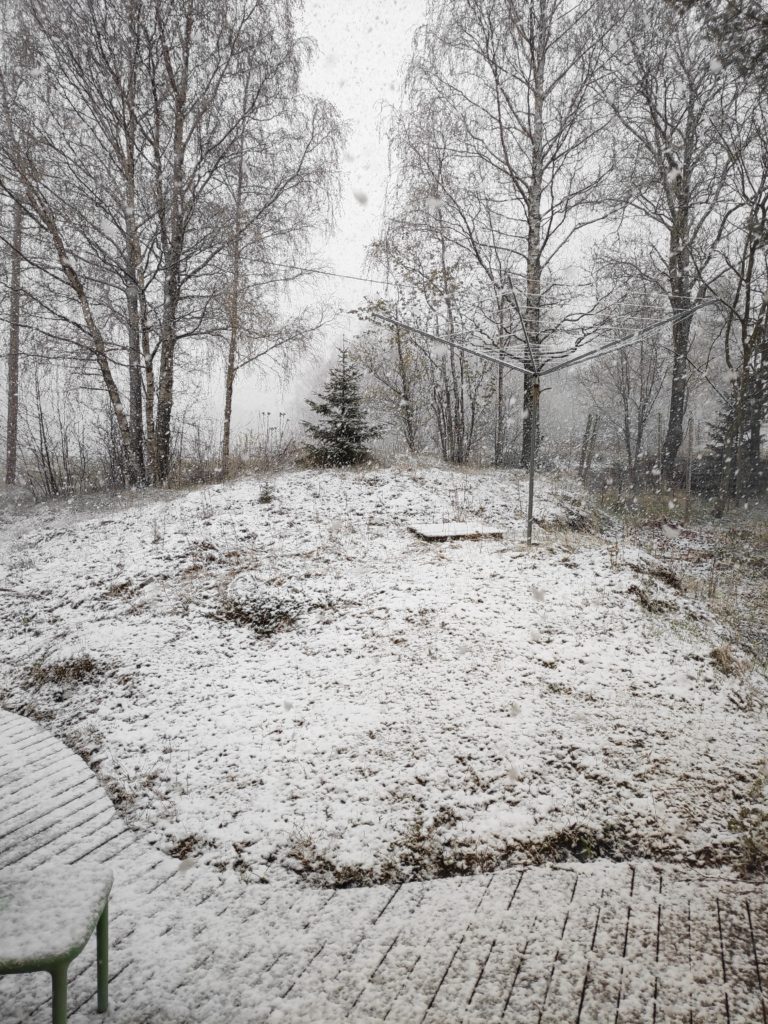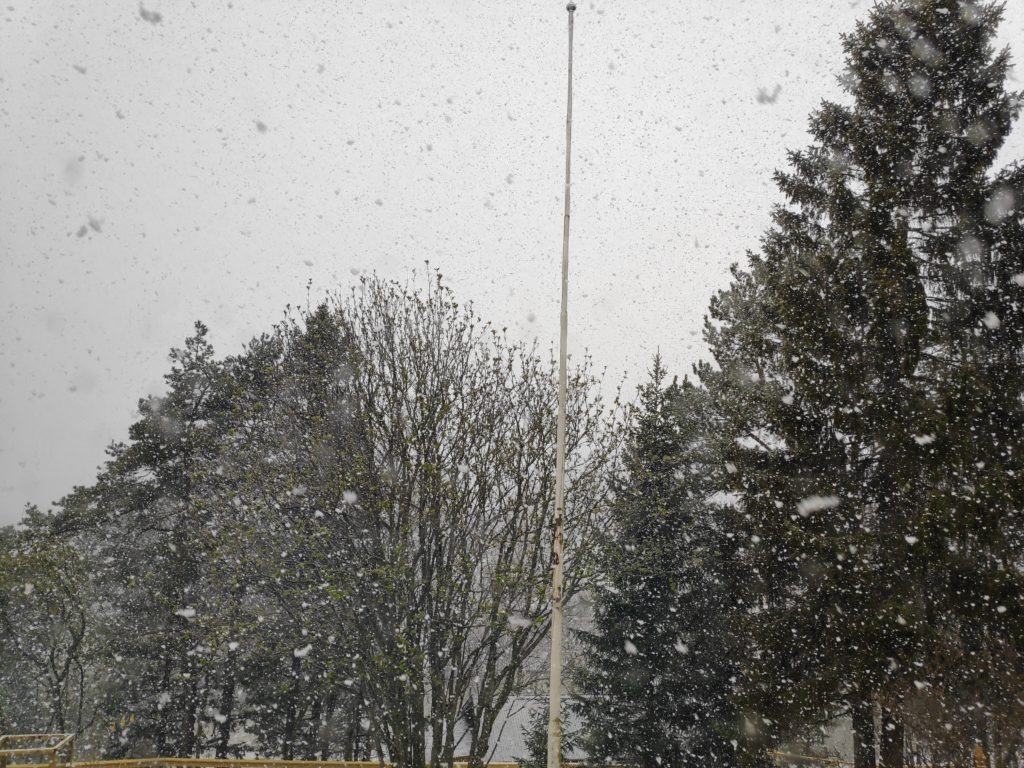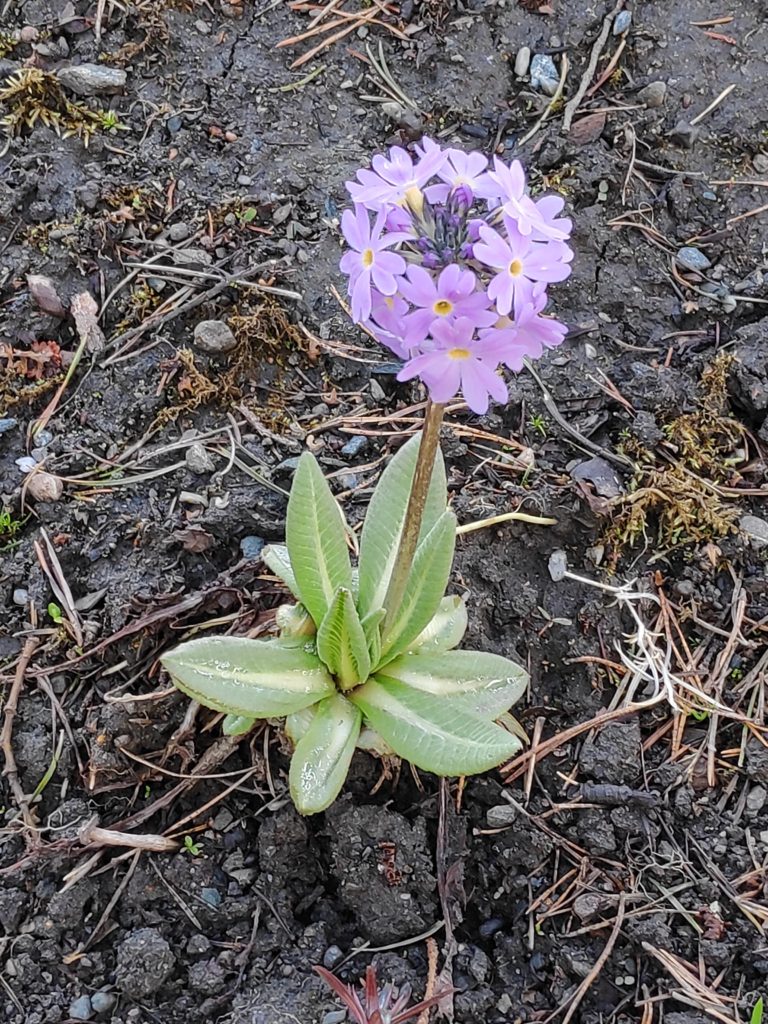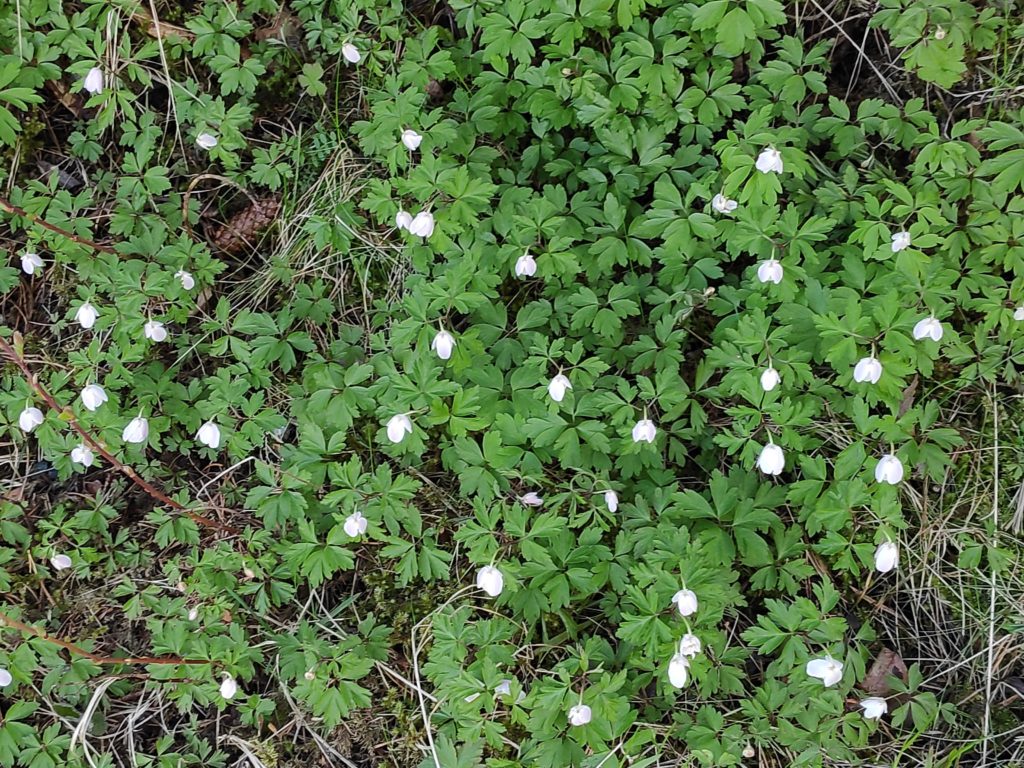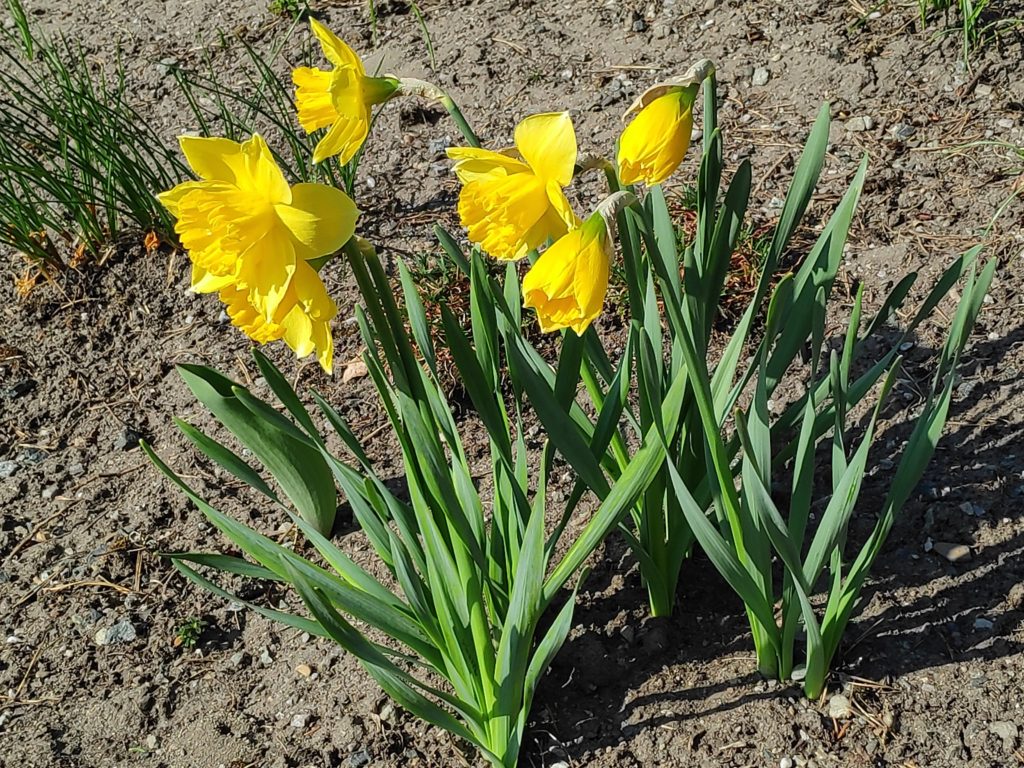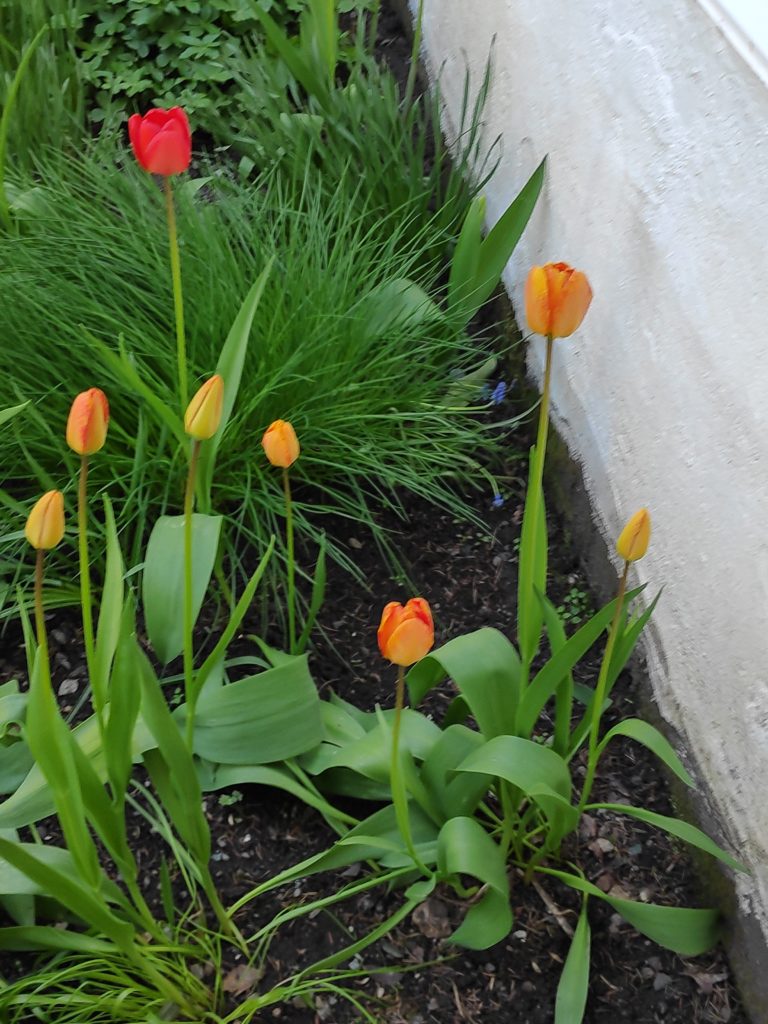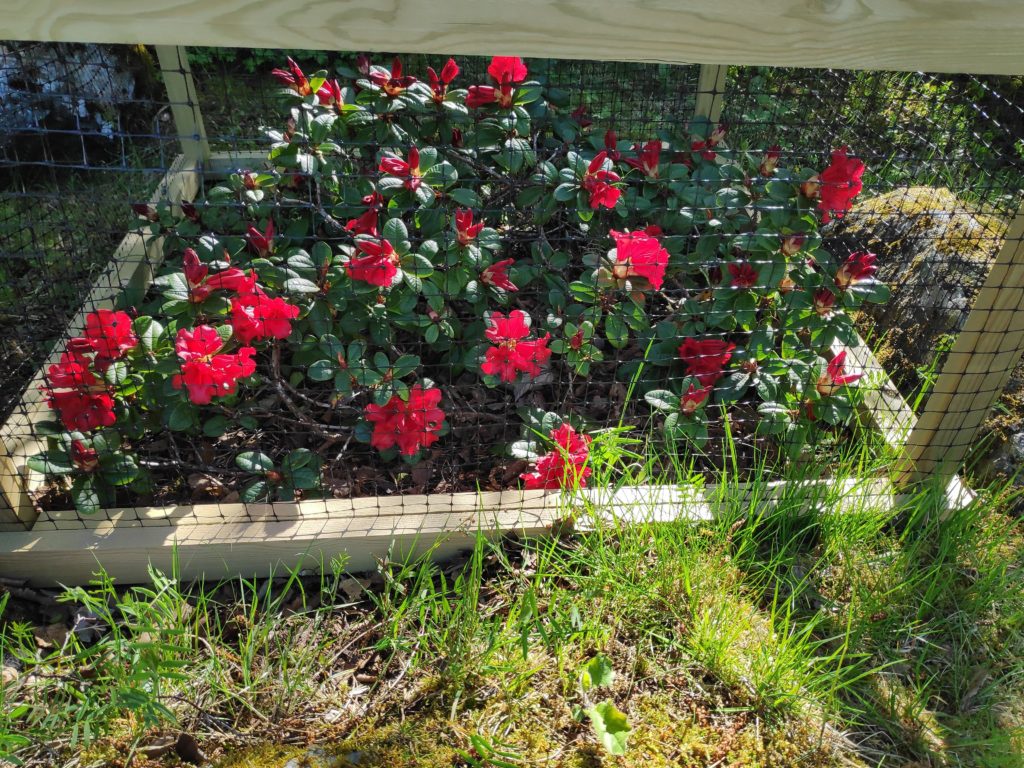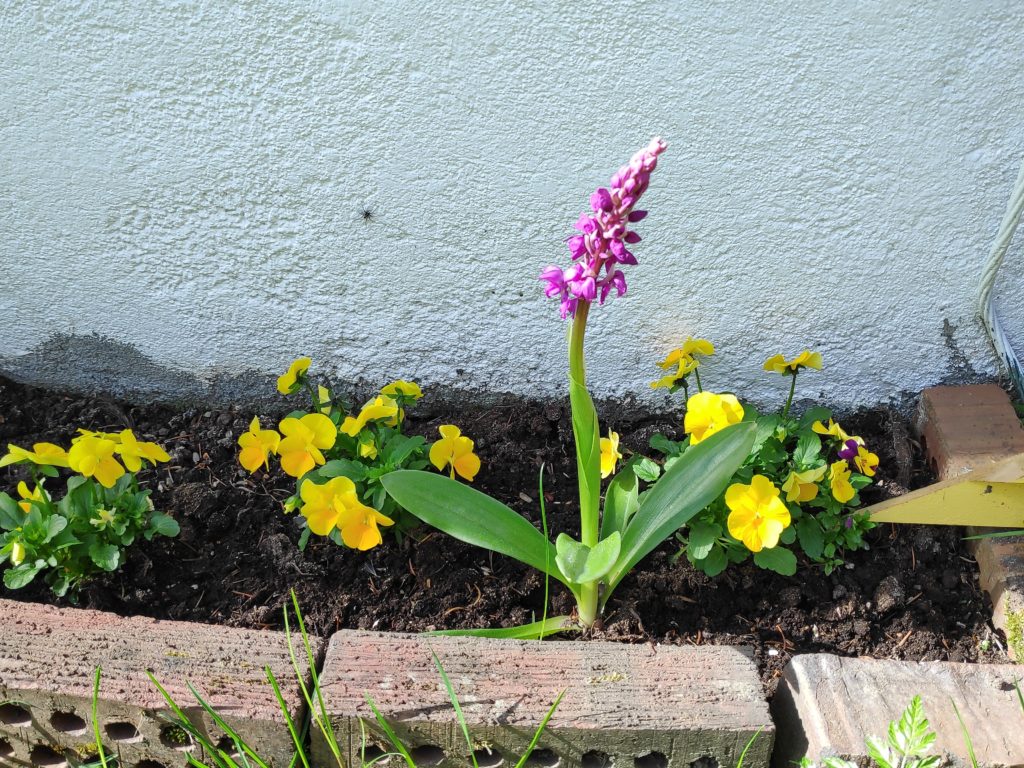Most weeks I walk once or twice up to a local dairy farm, Åsvang, to buy fresh milk in bottles. And by “up” I mean a 25 minute walk uphill, and a little more than one and a half kilometers. According to Google Maps we live at 32 meters above sea level and the farm is 129 meters above sea level, meaning that there is an altitude difference of 97 meters. It is good exercise.
When one does the same walk many times, it may seem a bit repetitive, but as the seasons change, it is interesting to see what changes have happened since the last walk. Especially in spring, there can be quite a few changes, just in a week. We’ve recently had plenty of rain and the walk today was sunny, so nature is coming to life again after winter.
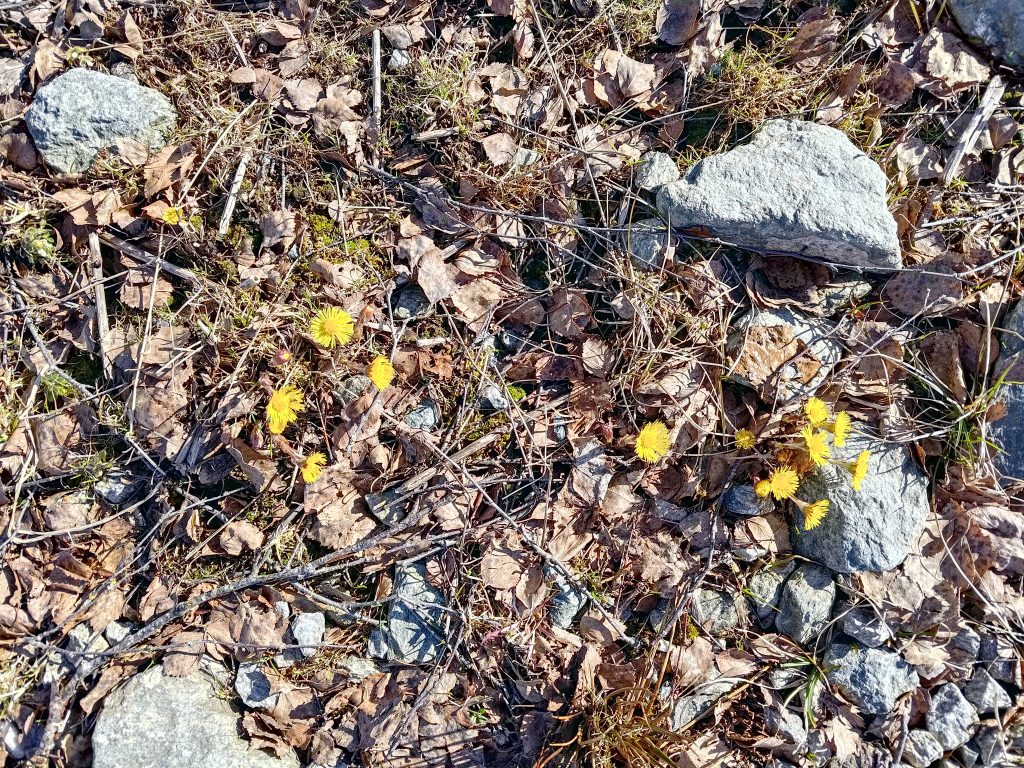
Where just a few weeks ago, these first yellow flowers were hard to find, they are now coming out in large clumps and quickly spreading along the sunny road banks. All pictures in this blog were taken on 2024.04.16.
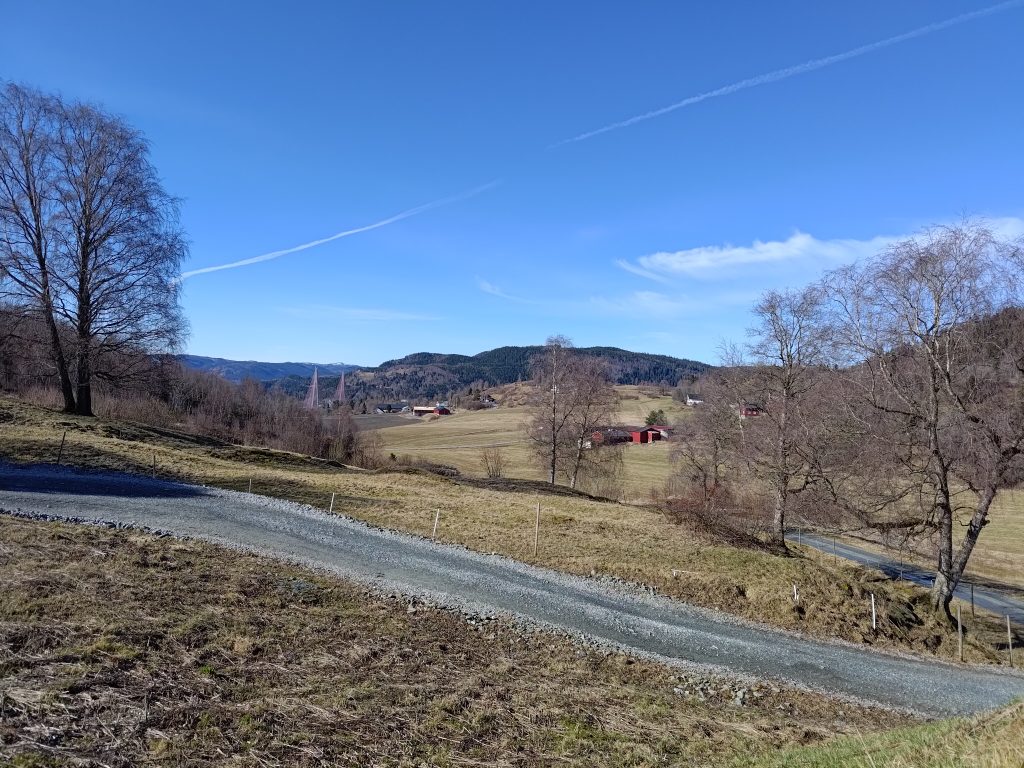
As one looks over the fields, some of them are just starting to turn green. The snow has disappeared, but it will be a while before the trees have leaves on them. If you look carefully, you can just see the tops of the two towers of Skarnsund Bridge.
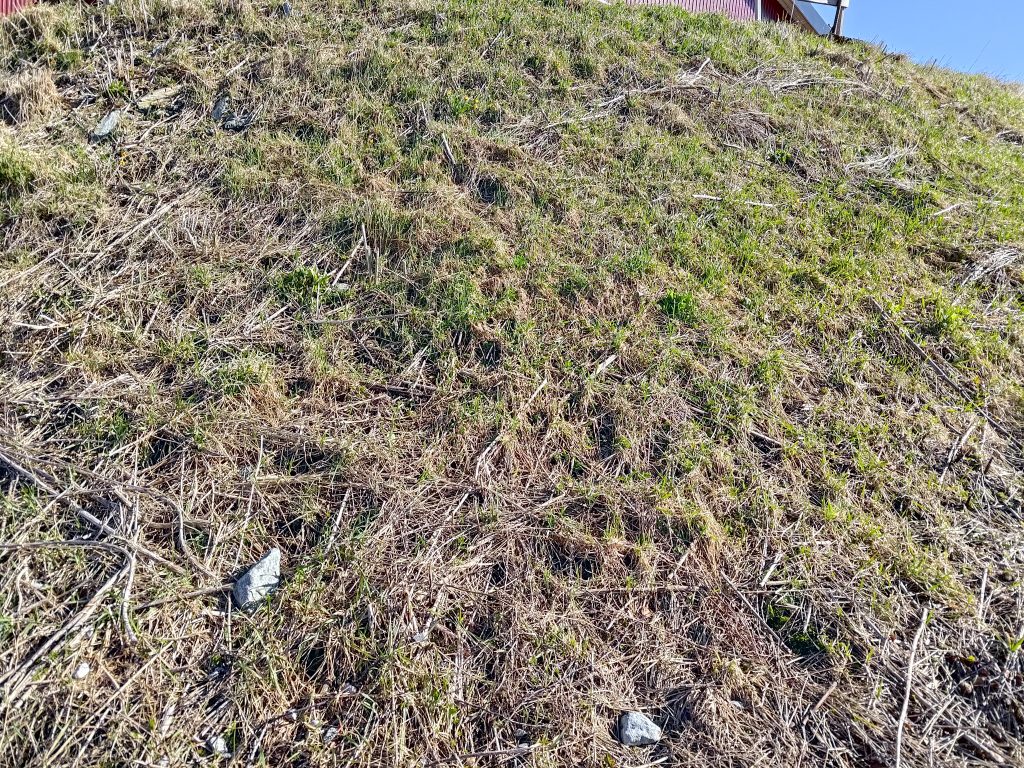
I love it when the new growth is starting to be more visible. Even the deer are starting to find enough grass in the fields to eat. There is still a lot of dry grass from the last year, but the new growth will soon be tall enough that one won’t see last year’s growth which becomes fertilizer for the new growth.
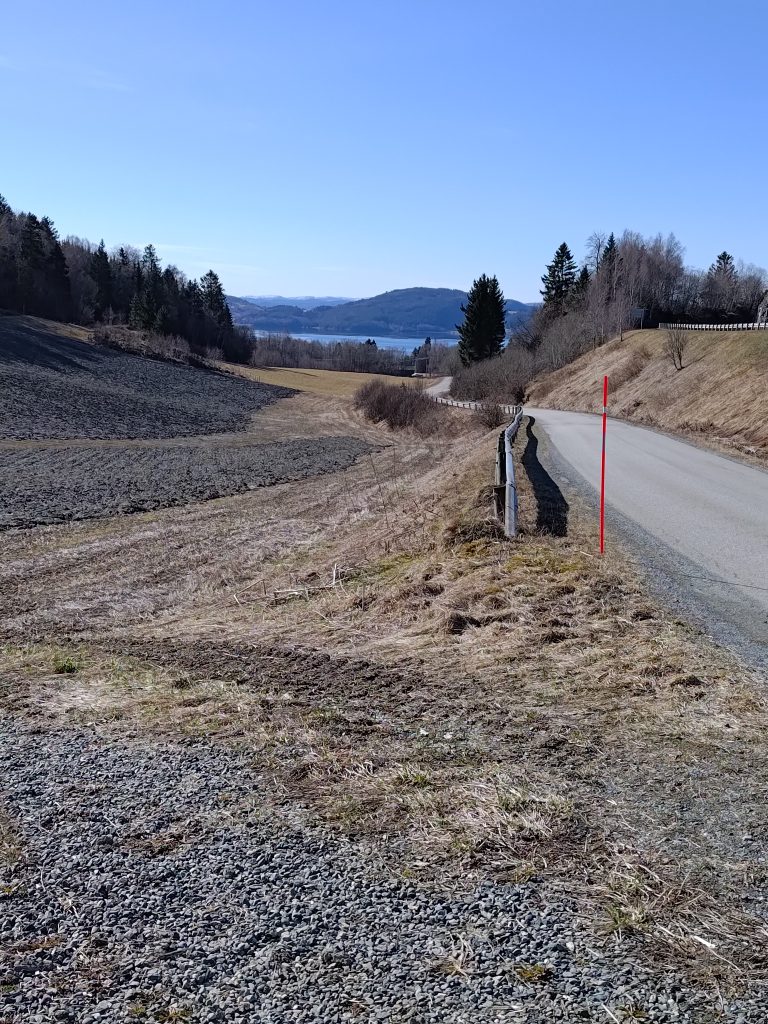
Though the fields are still mostly brown with dried grass, some of the fields have been plowed, often in the fall before the winter came. The road bank to the right of the road is just starting to show the promise of green grass. In the distance can be seen an island, Ytterøy, which means the outer island. We live in Inderøy, the inner island, which is actually a peninsula.
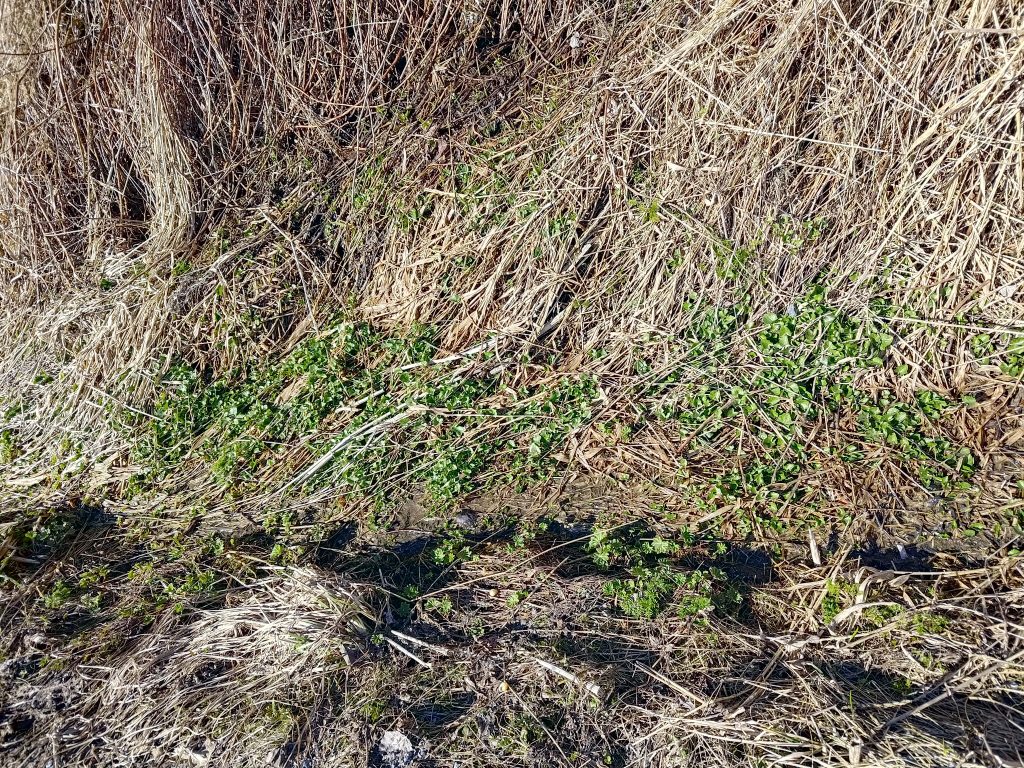
In the ditch, where there is still plenty of dampness from the heavy rains a few days ago, the leaves of flowering plants are showing that it won’t be long before there will be more flowers to be seen.
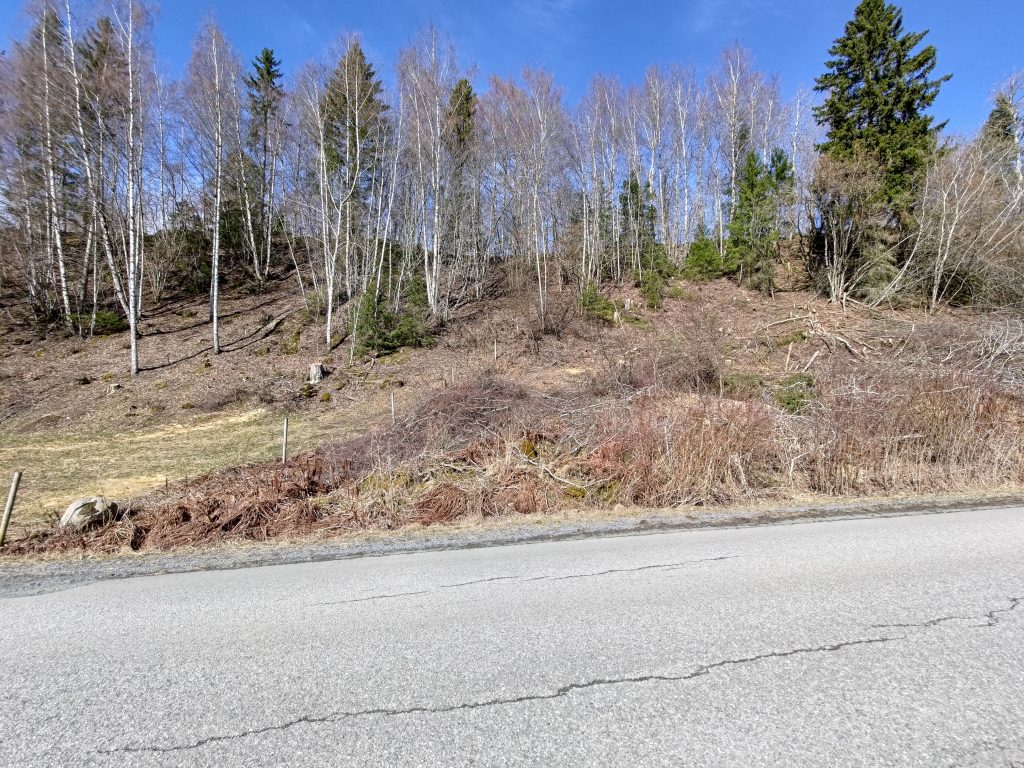
In a previous blog I mentioned people cutting down trees for firewood. Here’s an area that has been attacked by such a person. There is a field to the left, but in the center of the picture quite a few trees have been cut down this spring, making the hillside look bare. The small branches are left to rot, which is fine, but it doesn’t look very good.
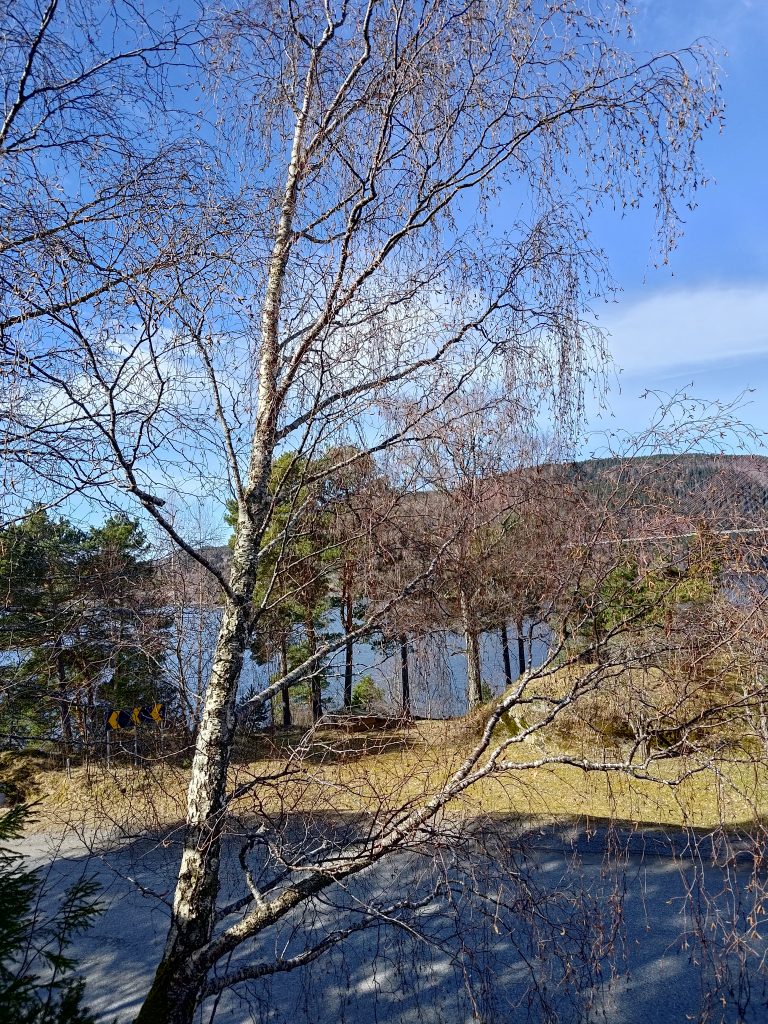
For many, spring is a problem with pollen. The birch tree is one that can cause quite a bit of problem, both for myself and many others. Already, the trees are putting out their pollen producing catkins, but it will be a month before the leaves come out on birches. There is a sharp difference in color between deciduous trees, like the birch, and the evergreens, either pine or spruce, which you can see in the background of this picture.
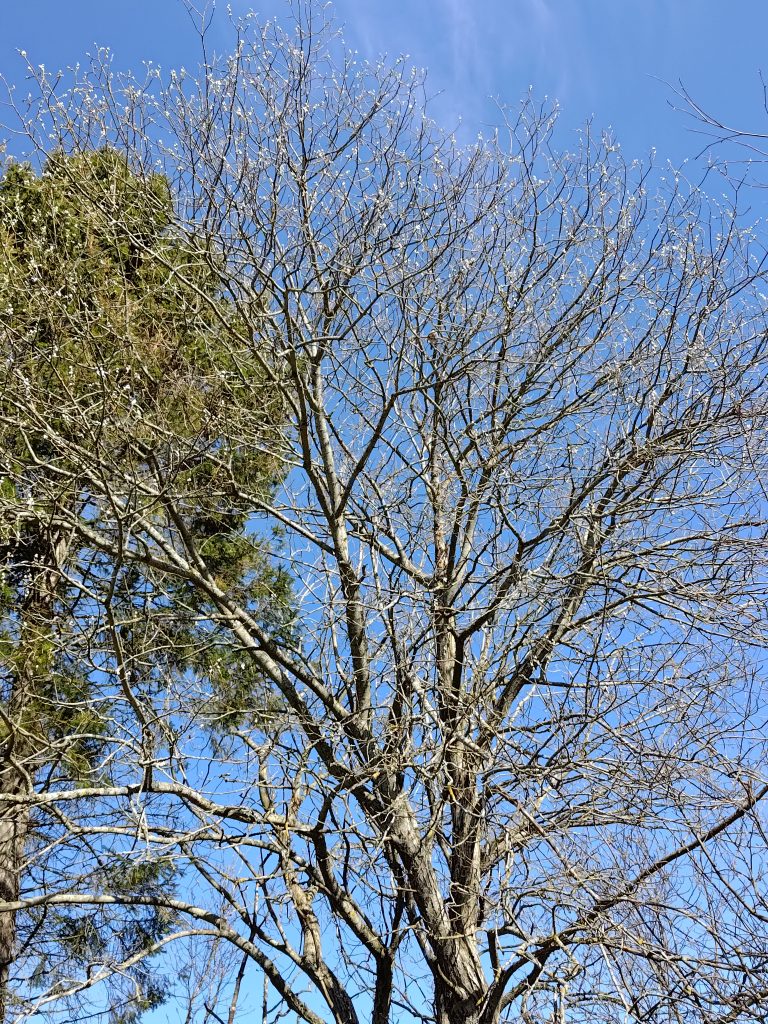
Willow trees put out their flowers long before the leaves come out. The pussy willows on this tree are just starting to come out and will soon be shedding their pollen. Checking today’s pollen warning shows “moderate” for willows, or salix.
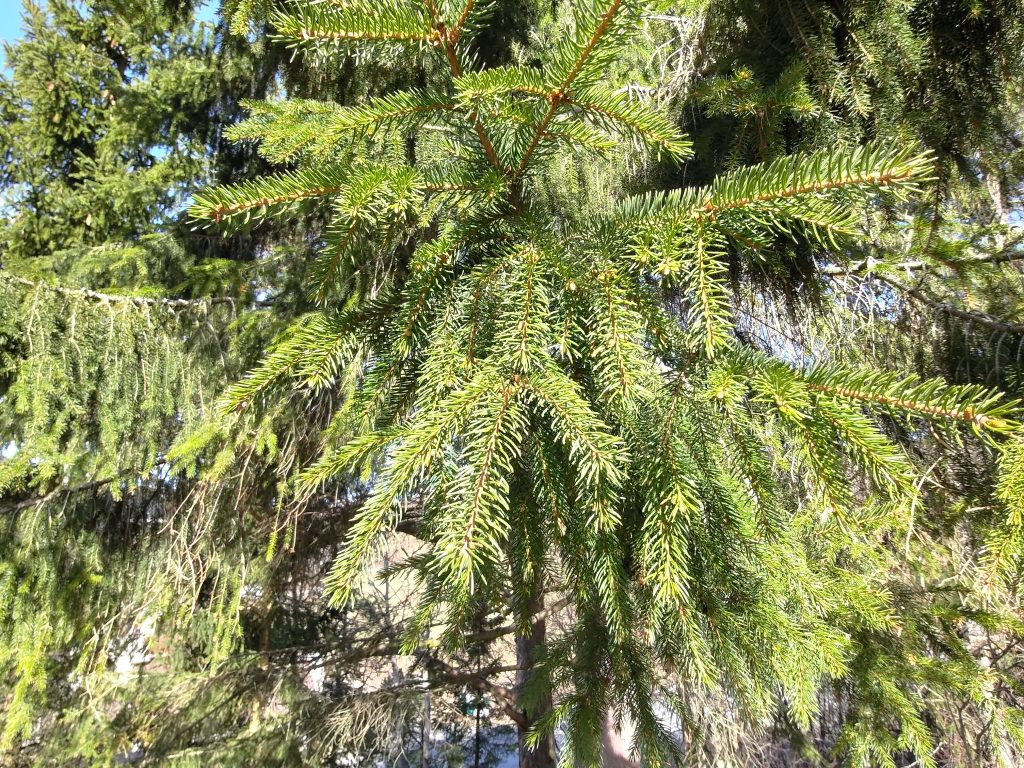
Trees are always hard to photograph close-up, in my opinion. What I see with my eye, is not always what appears in the photograph. Eyes are really much better devices than cameras in many ways, even older eyes. This year there have been a lot of spruce shoots from the ends of branches lying on the ground as if there has been too little food and animals have been eating the shoots. The new growth has not really started but at the very ends, there are signs of new growth just coming. The spruce trees did not bloom last year, and there are very few cones left for the squirrels to munch on, so I hope the trees bloom this year.
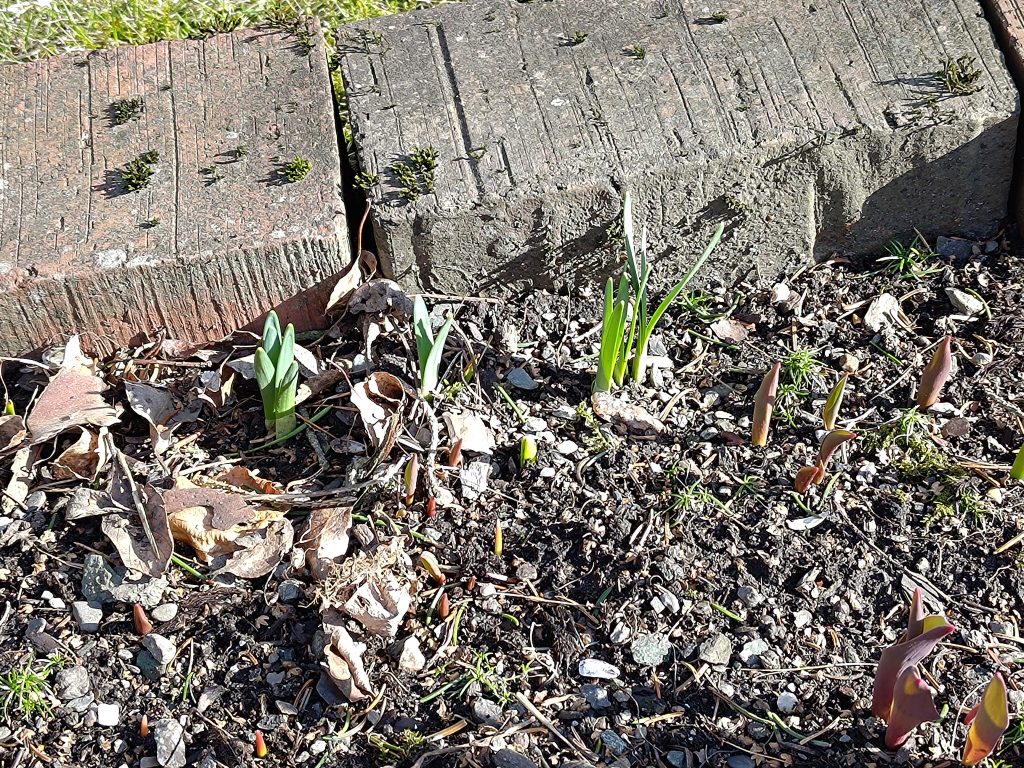
I am always eager to see what is coming up in my garden. Once the sprouts are showing from the bulbs, growth can happen amazingly quickly. Here are both tulips and daffodils coming up and there is also a peony plant that will emerge as well. The tulips don’t do very well anymore as the deer tend to eat them. But the daffodils do well as the deer don’t eat them.
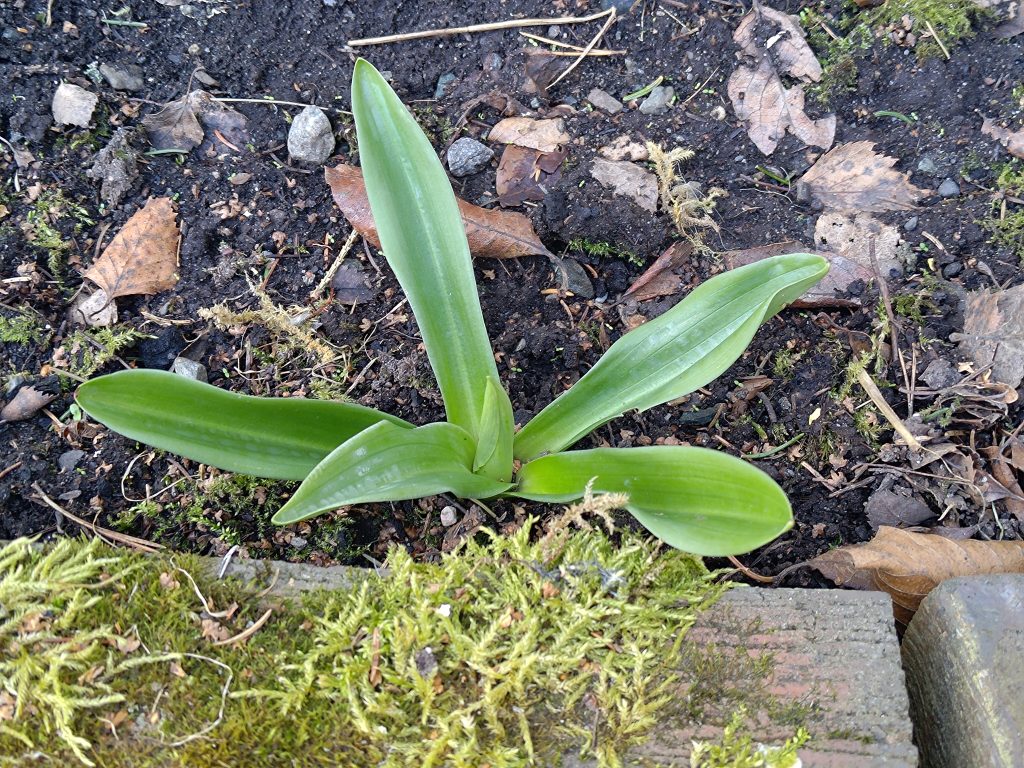
Our house is called “Fjellheim” and we translate that as “Cliff Cottage”, though a more direct translation would be “mountain home”. The above plant is a wild orchid that comes up every year. When we first moved to the house, it was growing in a ditch, as it needs lots of water. I carefully moved it one year so that it didn’t get destroyed by people digging in the ditch and I managed to find a place where it thrives. It comes up early, and already the flower stem is starting to show in the middle. This one will have a dark purple flower.
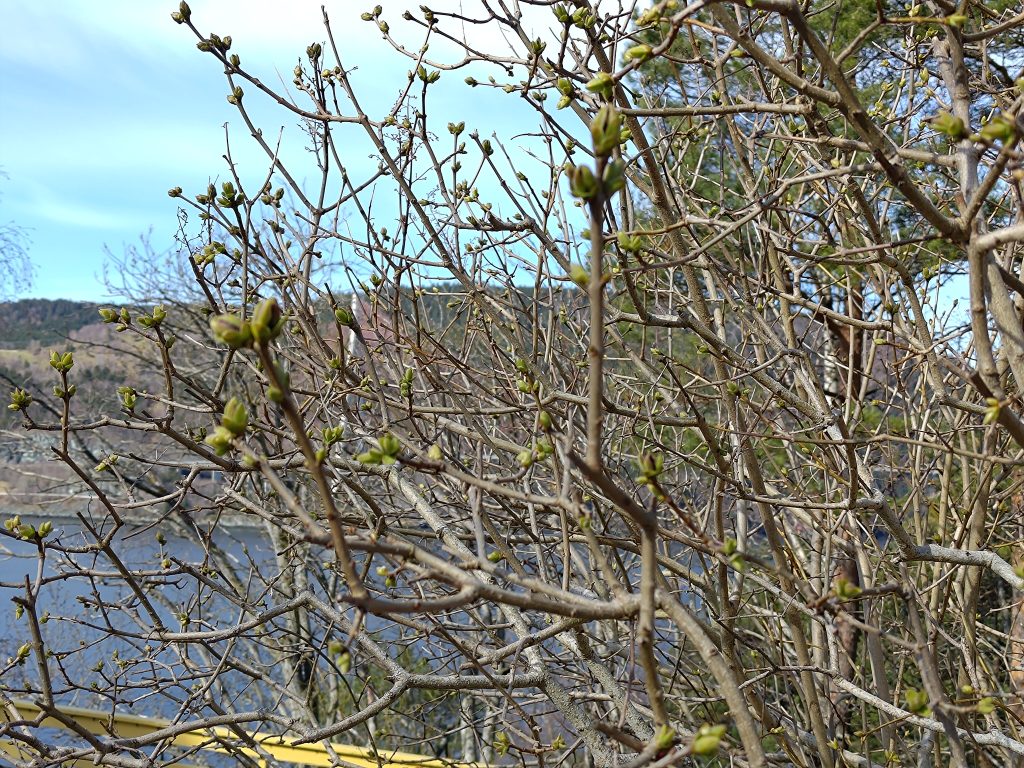
The lilac bush’s buds are starting to open out in the sunshine. We still have frost at night, but the daytime temperatures can be up to about 10 degrees. This bush gets lots of sunshine and will be one of the first ones on our lot to put out its leaves and flowers.
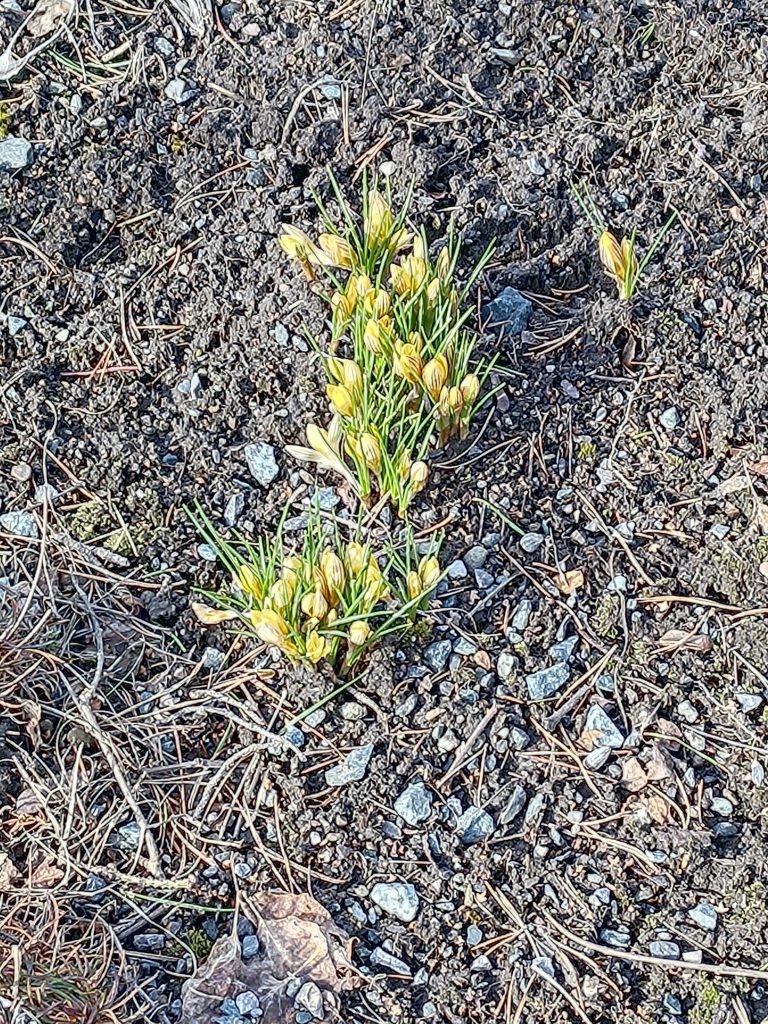
Crocuses are the first bulbs to bloom and these ones are enjoying the sunshine under the lilac bush. These come up in a bed where we have been putting snow when clearing the driveway in the winter, so there are always a lot of stones in the bed. Eventually the largest of them will be put back on the driveway, though that is a tedious job.
These were some of the delights of nature this week. But the joy of this time of year is how things change quickly. The earliest flowers disappear, the leaves come out on the trees, and new flowering plants emerge. I hope you can get outdoors and enjoy the nature that is around you.

